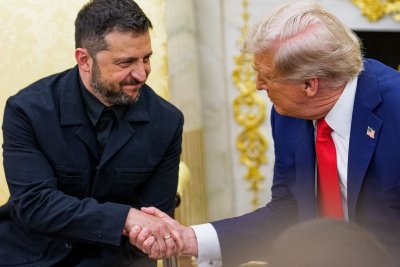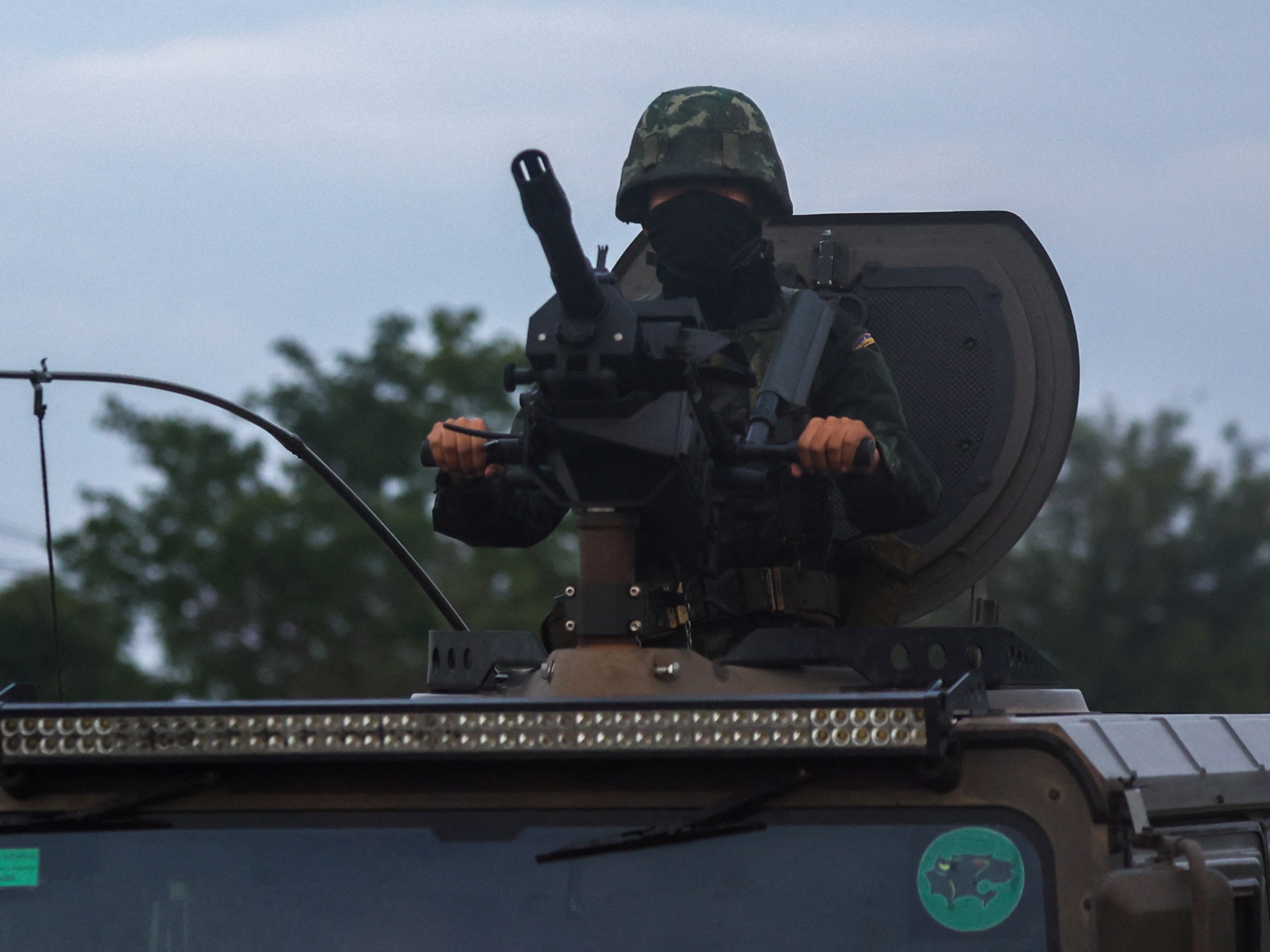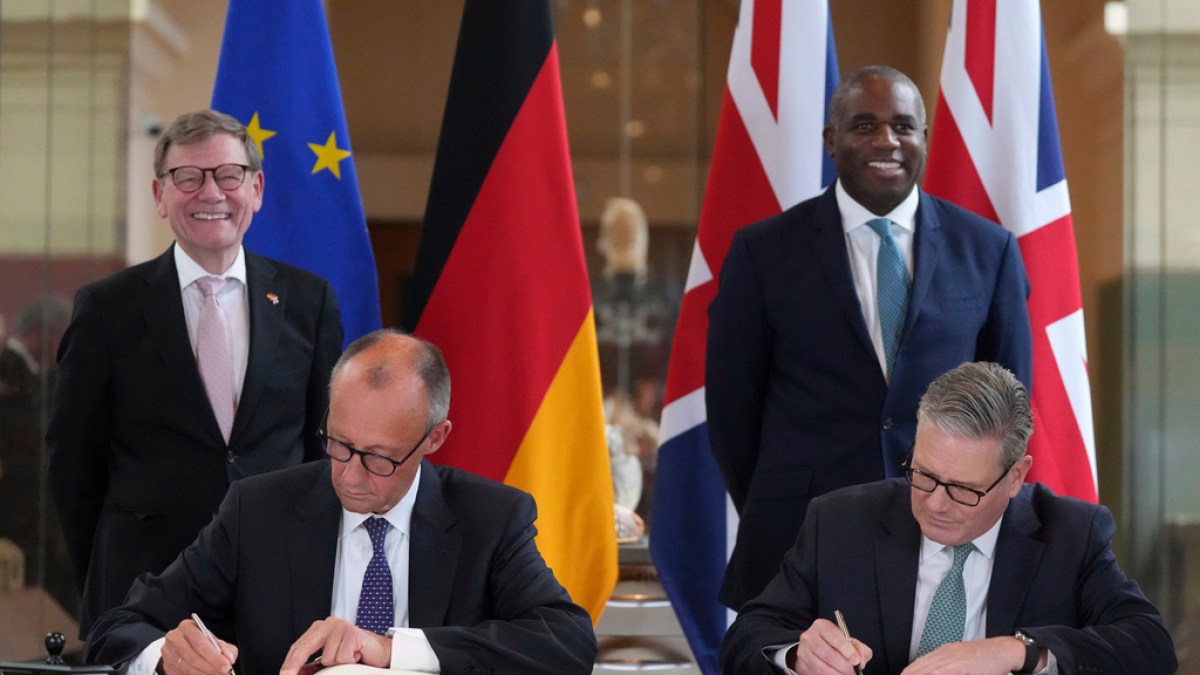Trump works to broker bilateral meeting between Putin, Zelensky

Aug. 18 (UPI) — President Donald Trump spoke with Russian President Vladimir Putin on Monday during a White House meeting with President Volodymyr Zelensky of Ukraine and said he will arrange a bilateral meeting between the two, within the next two weeks.
The call came during Monday’s negotiations between Zelensky, Trump and European leaders, who had gathered to discuss ending the war in Ukraine.
Trump said the future meeting would be followed by a trilateral meeting, involving the United States. On Monday night, the White House posted an Oval Office photo of Trump on the phone with Putin, as Secretary of State Marco Rubio and Vice President JD Vance looked on.
Trump said Vance, Rubio and Special Envoy Steve Witkoff would be involved in coordinating the meeting between Putin and Zelensky.
In a post on Truth Social, Trump said he “had a very good meeting with distinguished guests,” which included Zelensky, French President Emmanuel Macron and British Prime Minister Keir Starmer, as well as much of the European delegation and NATO Secretary General Mark Rutte.
“I called President Putin and began the arrangements for a meeting, at a location to be determined, between President Putin and President Zelensky,” Trump said. “After that meeting takes place, we will have a Trilat, which would be the two presidents, plus myself. Again, this was a very good, early step for a war that has been going on for almost four years.”
Trump met with Zelensky earlier Monday afternoon to signal that the United States would provide Ukraine with “very good protection.”
“The security guarantees would be provided by the various European countries, with a coordination with the United States of America,” Trump said. “Everyone is very happy about the possibility of PEACE for Russia/Ukraine.”
Macron called the U.S. commitment for Ukrainian security guarantees the “first and most important” outcome of Monday’s talks.
“Today, it was agreed that we will work with the United States of America on the content of these security guarantees and the cooperation that each party is prepared to provide,” Macron said, adding that any meeting would have to take place under a cease-fire.
“Call it a truce or a cease-fire, but we cannot hold discussions under bombs,” Macron added.
Trump told Zelensky at the start of the meeting: “I have a feeling you and President Putin are going to work something out. Ultimately, this is a decision that can only be made by President Zelensky and by the people of Ukraine working also together in agreement with President Putin. And I just think that very good things are going to come of it.”
By the end of the day, Zelensky told reporters he is ready for “any format” of a meeting with Putin and said he would also participate in a trilateral meeting if there is progress in the first one.
“I believe unconditionally we should meet and think about the further development of this path of the war,” he said.
Zelensky told reporters that the security guarantees included plans for Ukraine to purchase $90 billion in American weapons through European funding.
Zelensky also said he and Trump had a long discussion about a map in the Oval Office, showing Russian-occupied territories in Ukraine. Rutte said Ukrainian territory was not discussed during the broader Monday meetings.
Zelensky arrived around 1 p.m. EDT on Monday along with several EU leaders. Trump and Zelensky sat in the Oval Office, mirroring their meeting earlier this year.
This time, they avoided the dramatic shouting match from six months ago in the same space.
During the February exchange, Trump and Vance accused Zelensky of being “disrespectful” toward the United States and the Trump administration.
Zelensky was much more complimentary during Monday’s meeting, immediately thanking Trump for his efforts to stop Russia’s war.
Vance, who was in the Oval Office, said nothing this time.
The meeting came after Trump’s summit with Putin on Friday in Alaska.
European Council leaders are scheduled to meet via videoconference Tuesday to discuss the meeting. The council’s president, Antonio Costa, called the conference, he announced on X Monday.
“I have convened a video conference of the members of the European Council for tomorrow at 1 p.m. CEST, for a debriefing of today’s meetings in Washington, D.C., about Ukraine,” Costa wrote. “Together with the U.S., the EU will continue working towards a lasting peace that safeguards Ukraine’s and Europe’s vital security interests.”
European leaders, including Rutte, Starmer, Macron, German Chancellor Friedrich Merz, Italian Prime Minister Giorgia Meloni, Finnish President Alexander Stubb and European Commission President Ursula von der Leyen, accompanied Zelensky to Washington for the talks.


